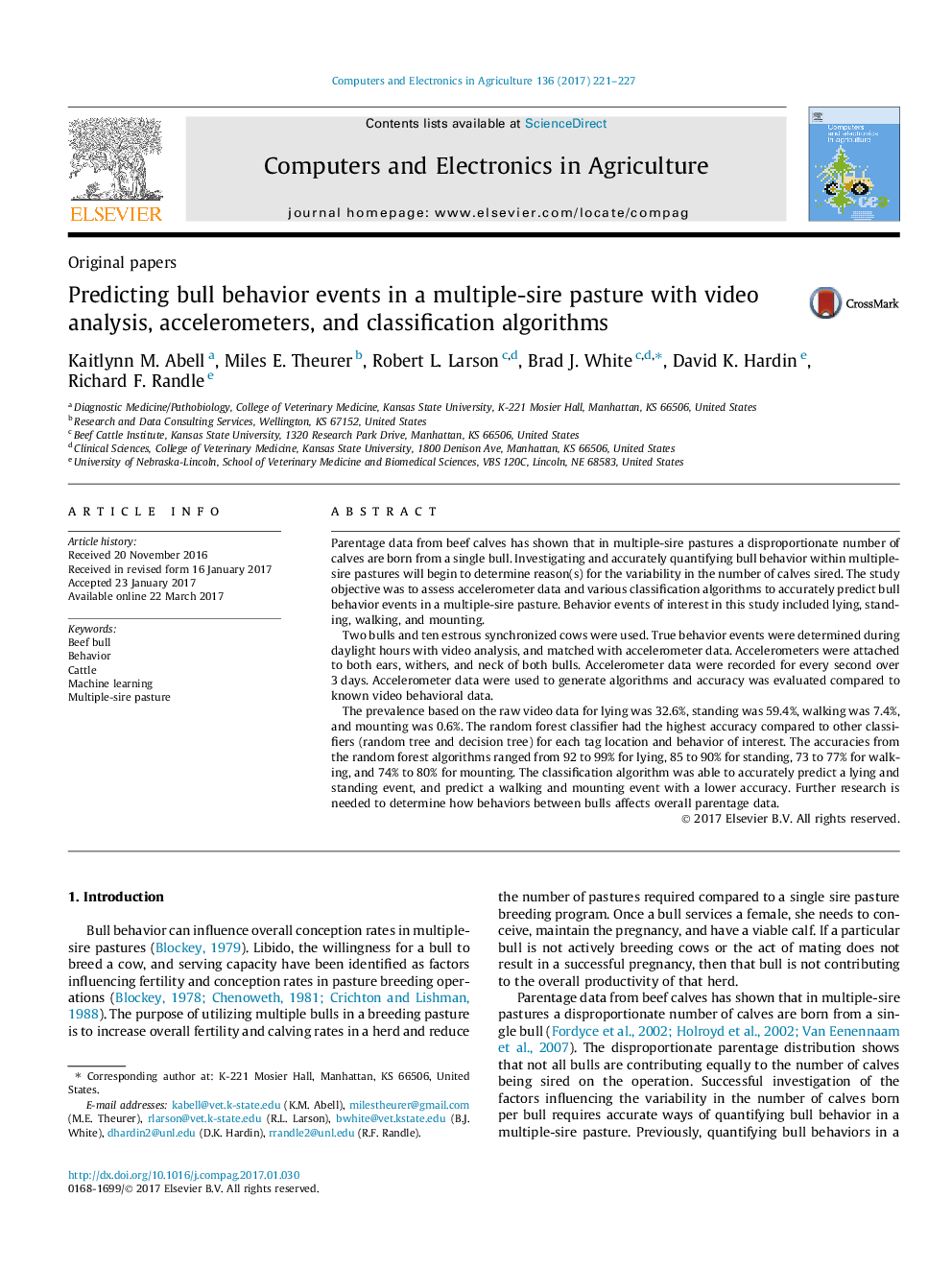| کد مقاله | کد نشریه | سال انتشار | مقاله انگلیسی | نسخه تمام متن |
|---|---|---|---|---|
| 6458862 | 1421112 | 2017 | 7 صفحه PDF | دانلود رایگان |
- Classification algorithms to predict bull behavior is proposed.
- True behavior events were determined during daylight hours with video analysis.
- Video and accelerometer data generated algorithms and accuracy was evaluated.
- The algorithm accurately predicted a lying and standing event.
- The algorithm had a lower accuracy for walking and mounting.
Parentage data from beef calves has shown that in multiple-sire pastures a disproportionate number of calves are born from a single bull. Investigating and accurately quantifying bull behavior within multiple-sire pastures will begin to determine reason(s) for the variability in the number of calves sired. The study objective was to assess accelerometer data and various classification algorithms to accurately predict bull behavior events in a multiple-sire pasture. Behavior events of interest in this study included lying, standing, walking, and mounting.Two bulls and ten estrous synchronized cows were used. True behavior events were determined during daylight hours with video analysis, and matched with accelerometer data. Accelerometers were attached to both ears, withers, and neck of both bulls. Accelerometer data were recorded for every second over 3Â days. Accelerometer data were used to generate algorithms and accuracy was evaluated compared to known video behavioral data.The prevalence based on the raw video data for lying was 32.6%, standing was 59.4%, walking was 7.4%, and mounting was 0.6%. The random forest classifier had the highest accuracy compared to other classifiers (random tree and decision tree) for each tag location and behavior of interest. The accuracies from the random forest algorithms ranged from 92 to 99% for lying, 85 to 90% for standing, 73 to 77% for walking, and 74% to 80% for mounting. The classification algorithm was able to accurately predict a lying and standing event, and predict a walking and mounting event with a lower accuracy. Further research is needed to determine how behaviors between bulls affects overall parentage data.
Journal: Computers and Electronics in Agriculture - Volume 136, 15 April 2017, Pages 221-227
